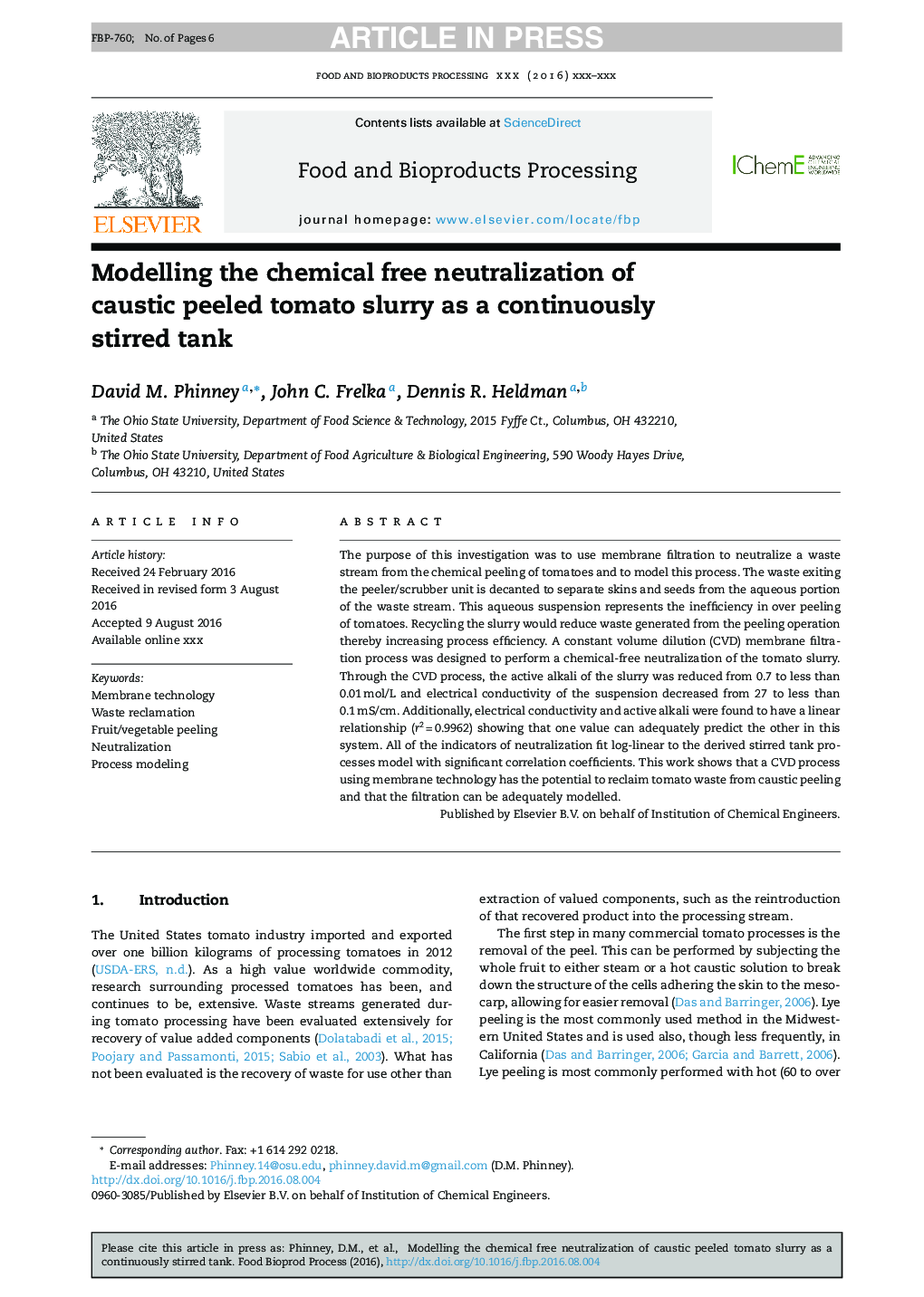| Article ID | Journal | Published Year | Pages | File Type |
|---|---|---|---|---|
| 6488441 | Food and Bioproducts Processing | 2016 | 6 Pages |
Abstract
The purpose of this investigation was to use membrane filtration to neutralize a waste stream from the chemical peeling of tomatoes and to model this process. The waste exiting the peeler/scrubber unit is decanted to separate skins and seeds from the aqueous portion of the waste stream. This aqueous suspension represents the inefficiency in over peeling of tomatoes. Recycling the slurry would reduce waste generated from the peeling operation thereby increasing process efficiency. A constant volume dilution (CVD) membrane filtration process was designed to perform a chemical-free neutralization of the tomato slurry. Through the CVD process, the active alkali of the slurry was reduced from 0.7 to less than 0.01Â mol/L and electrical conductivity of the suspension decreased from 27 to less than 0.1Â mS/cm. Additionally, electrical conductivity and active alkali were found to have a linear relationship (r2Â =Â 0.9962) showing that one value can adequately predict the other in this system. All of the indicators of neutralization fit log-linear to the derived stirred tank processes model with significant correlation coefficients. This work shows that a CVD process using membrane technology has the potential to reclaim tomato waste from caustic peeling and that the filtration can be adequately modelled.
Related Topics
Physical Sciences and Engineering
Chemical Engineering
Bioengineering
Authors
David M. Phinney, John C. Frelka, Dennis R. Heldman,
